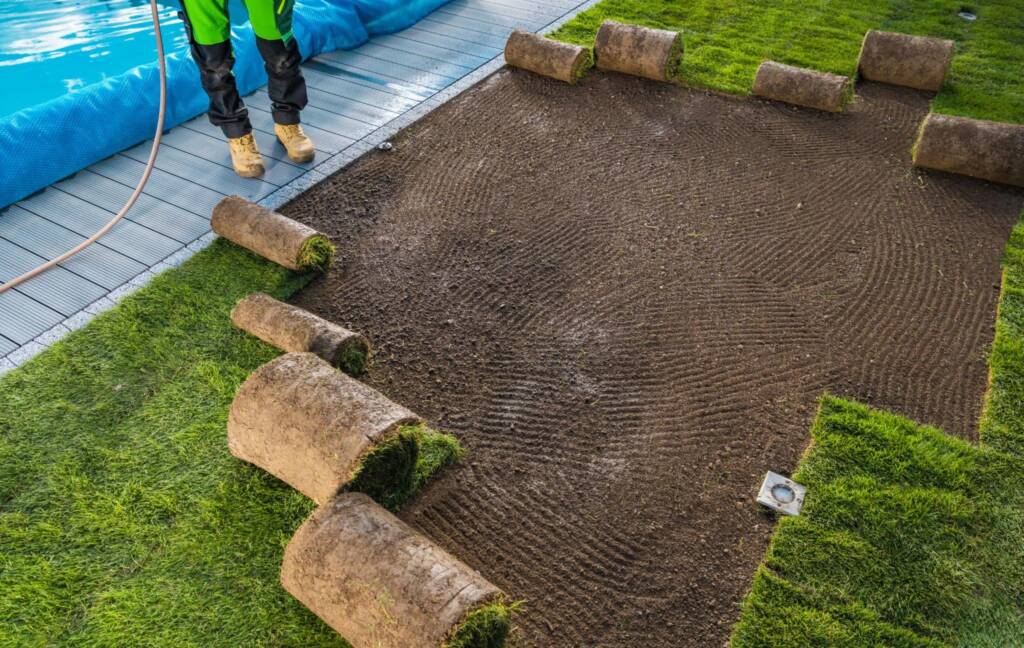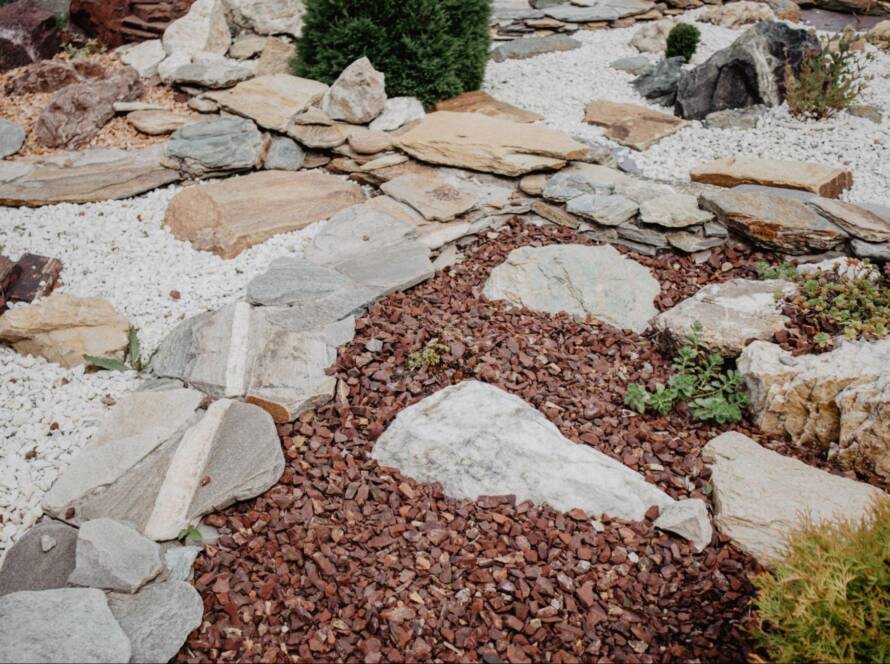A thick, green lawn changes the entire look of a property. It boosts curb appeal and brings a yard to life. However, achieving this through sod installation can be costly. The price varies more than most expect, depending on the season, region, and timing. Knowing when to move can be the difference between saving big and spending more than needed.
Understanding Sod Installation Cost
The cost of installing sod isn’t just about the grass itself. Labor, soil preparation, delivery, and disposal of old grass all contribute to the total cost. Different regions also charge differently based on local demand and availability. Knowing what makes up the final bill helps you spot where to save. Breaking it down gives you better control over your project costs.
What Goes Into Sod Installation Pricing?
The total cost includes much more than the sod per square foot. It affects labor rates, soil prep, grading, and clearing debris. If it’s a big job, you’ll also pay for delivery and equipment rentals. Labor often takes the largest share, especially if the terrain is uneven—the more complex the job, the higher the price tag.
Average Cost Ranges Across the U.S.
Across most of the country, sod installation costs range from ninety cents to two dollars per square foot. That includes materials and labor but doesn’t cover unique site conditions. In major cities, that range can stretch to three dollars per square foot. In rural areas, lower labor costs keep prices down. Knowing your area’s average gives you a solid base for negotiations.
Why Prices Fluctuate Throughout the Year
Prices fluctuate throughout the year due to variations in supply and the availability of installers. Spring and early summer usually bring the highest demand, driving up labor and material costs. Fall and winter often bring slower business for contractors, so you’ll likely score a better rate then.
Seasonal Impact on Sod Installation Cost
Timing your sod project with the right season can save you a considerable amount of money. Seasonal changes affect everything from sod availability to crew pricing. Each time of year has pros and cons, depending on your location. To choose the best window, you need to know what’s happening in the sod market. Here’s how each season affects the final cost:
Spring: High Demand, Higher Costs
Spring brings ideal growing conditions, which means everyone wants new sod. Landscapers are flooded with bookings and prices accordingly. Sod farms also raise prices because of the rush in demand. You’ll pay a premium if you choose spring, especially in the early months. If you’re set on this season, booking far ahead is the only way to dodge the spike.
Summer: Mixed Bag Depending on Region
Early summer is still suitable for sod installations in cooler zones. However, in hotter areas, high heat makes new turf a risk. Installers may still charge peak rates due to lingering demand. At the same time, some regions see a slight price dip in mid-summer. Ask local pros what their summer looks like before locking anything in.
Fall: Sweet Spot for Budget-Friendly Sod
Fall often hits the sweet spot for affordability and success. Cooler weather helps sod root well, reducing water use. Many installers offer lower rates to fill their calendars before the winter season. Sod farms may discount late-season stock to clear inventory. If you want quality work at a better rate, fall is your window.
Winter: Rock-Bottom Prices With a Catch
Winter can bring the cheapest installation quotes. That’s because business slows down, and crews want to stay busy. However, success depends heavily on the climate of your region. Frozen ground or dormant sod can complicate results. If your area has mild winters, this can be your budget-winning move.

Regional Differences in Sod Installation Cost
Where you live has a direct impact on the cost of sod. From climate to contractor density, location shapes price. Warm-season and cool-season grasses have different timelines and challenges. Add in labor market shifts and local demand; no two places look alike. Understanding your region helps you time it right and pay less.
Warm-Season vs. Cool-Season Grass Zones
In the South, sod like Bermuda or Zoysia thrives during the warmer months. This sod shortens your install window and limits off-season deals. In the North, grasses like fescue and bluegrass grow best in cooler temperatures. It offers more flexibility for fall and winter installs. Knowing your region’s grass type affects how low the prices can go.
Urban vs. Rural Pricing Variations
Urban areas often have higher labor rates and delivery fees. Contractors charge more due to increased traffic, limited parking, and high demand. Rural areas may cost less but have fewer installer options. That means less competition, which sometimes holds prices firm. Comparing nearby cities and suburbs can help you find a better value.
Weather Patterns and Their Impact on Labor
Regions with more stable weather offer longer sod seasons. That spreads out demand and helps keep prices even. Areas with short growth windows see intense booking rushes. That drives up labor costs and limits scheduling flexibility. If your climate stays moderate year-round, you’ve got more room to shop around.
How to Plan for the Lowest Sod Installation Cost
Planning puts you in control of sod costs. The more notice you give, the better your chance of catching deals. Contractors like to fill slow periods early so that you can get better rates. Watching demand trends helps you make more intelligent choices. These small efforts significantly reduce the final bill.
Booking Off-Peak for Bulk Discounts
Many contractors lower prices when business slows. Booking installs in their off-season can score you discounts. You may even receive a discount on bulk orders if you time it right. Late fall is usually the best season to find these offers. Always ask about volume or seasonal pricing when getting quotes.
Watching the Market Like a Pro
Check sod prices like you’d watch airfare. Some farms and installers post seasonal pricing online. Others offer discounts through newsletters or email alerts. Follow a few local providers and track rates across the year. Knowing the patterns helps you capitalize on opportunities when prices drop.
Working With Installers During Their Slow Season
When work is light, crews are eager to fill slots. That’s when you have negotiating power. Ask about cancellation dates or upcoming openings. Installers often discount last-minute jobs to stay busy. Be flexible; you can get a premium job at a budget rate.

Additional Tips to Lower Sod Installation Cost
There’s more to saving money than just picking the right season. How you prepare and who you work with matter just as much. Many homeowners overlook simple ways to reduce costs. With a few smart steps, you can avoid upsells and inflated pricing. Small decisions made early can shrink your final bill more than you think.
DIY Prep Work Before Installation
Installers charge for clearing old grass, grading, and soil fixes. If you do that yourself, you cut labor time and cost. Remove debris, level the ground, and water the soil beforehand. The less work they have to do, the cheaper the quote. Just make sure you do it right to avoid setbacks later.
Choosing the Right Sod Type for Your Climate
Not all sod types cost the same, and not all work everywhere. Some grasses need less water or fewer treatments long-term. Select a variety that is suited to your soil and weather conditions. It keeps your lawn healthy without expensive maintenance and prevents the need for reinstallation down the line.
Comparing Local Installer Quotes the Smart Way
Don’t just get one quote and call it done. Reach out to at least three installers, ideally five. Ask for itemized breakdowns to compare apples to apples. It will help you spot overpriced services or hidden fees. Contractors tend to sharpen their pencils when they know you’re shopping around.
Best Time of Year to Get the Lowest Sod Installation Cost
Choosing the best time means looking beyond your calendar. It’s about watching prices, gauging demand, and staying flexible. Most of the lowest rates come in late fall or mild winters. That’s when crews slow down and inventory needs to move. Making your move in that window can cut costs without sacrificing results.
Timing the Market With Weather and Supply
Cold snaps, rain, and droughts change the installation calendar. Watch forecasts and local farm updates closely. If it has been dry and cool, the installation window might open earlier. Supply builds up in these off-months, lowering prices. A few weeks’ difference can cut your cost without risking turf health.
Leveraging Post-Growing Season Discounts
After the peak growing season, demand falls off fast. Sod farms don’t want excess inventory sitting through winter, so they slash prices to move what’s left. Installers follow suit to keep crews working. That window between late fall and early winter brings significant savings.
Taking Advantage of Contractor Lulls
Contractors hate empty weeks on the books. That’s when they’re open to deals, faster timelines, and better service. Reach out during these lulls and inquire about flexible scheduling options. Even top-tier pros drop prices when demand drops. It’s the easiest way to save without losing quality.
Get the Lowest Sod Installation Cost While You Can
Your lawn doesn’t need to be a long-term project or a money pit. It requires brilliant timing, precise planning, and the courage to move when others stall. The lowest sod installation cost won’t wait around—it shows up quietly when the rush dies down and disappears as fast as it came. If you’re watching the calendar, watching the weather, and listening to the market, you already have the edge. Grab your moment before the ground hardens, the schedules fill, and the deals vanish.
Don’t guess your way through lawn care. Head to the Brady Landscaping & Construction blog and get the facts that save time and money.

